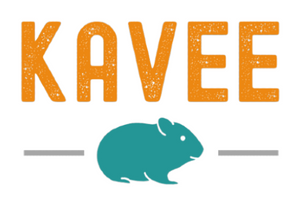You’re probably aware that guinea pigs come in many shapes and sizes, not to mention their amazing hair types and colors. These unique traits are what allows pet owners to distinguish between guinea pig breeds. Besides these main traits, did you know that there is also one other important trait to look out for? If you’ve noticed that your guinea pig has a distinct shiny, almost glass-like appearance, it could indicate a serious health concern for your guinea pig.
Read on to find out more about satin guinea pigs.

What are Satin Guinea pigs?
The satin trait is a specific coat type that can appear in all guinea pig colors, hair types, and in several breeds including Silkie, Peruvian, American, Teddy and Abyssinian varieties. Guinea pigs who are defined as satin have hair that exhibits a unique sheen that many would describe as glass, most highlighted on their nose and feet. The gene that causes this is recessive, thus, in order to have this particular coat, a guinea pig must receive the trait from both parents.
The satin trait causes a guinea pig’s hair shaft to be hollow, giving its distinct translucent look. This makes it often easier to identify in direct sunlight. This should not be confused with a healthy coat of hair.

Despite their shiny appearance, satin guinea pigs often suffer from mild - severe health complications due to this genetic trait: this is referred to as satin syndrome. Even guinea pigs that do not exhibit the satin trait can still carry the gene in their DNA, which can pose similar health risks.
Do other small animals carry the satin trait?
Sadly, satin syndrome has also been found in other small pets such as hamsters and rabbits.

What is Satin Syndrome?
Satin syndrome can affect both guinea pigs that display the satin trait and those that are gene carriers. This places both guinea pigs at higher risk of developing kidney disease, often resulting in chronic long term adverse effects on their heart, bones and, parathyroid and thyroid glands.
Many guinea pigs with satin syndrome often go on to develop osteodystrophy, which is a metabolic disease that prevents calcium from being absorbed properly in the body. This leads to complications in dental and bone health due to decalcification.
Sadly, guinea pigs who are found to have satin syndrome often have poor prognosis resulting in shorter lifespans. These piggies will require piggy parents to provide them with plenty of love and care, as well as frequent health checks and vet care, to monitor the progression of the disease.

When do symptoms first appear in guinea pigs with satin syndrome?
Symptoms of satin syndrome can appear as early as 12 months in guinea pigs. Some guinea pigs do not show signs of satin syndrome until much later in their lives.

What are the signs and symptoms of satin syndrome in guinea pigs?
Not all guinea pigs will experience the same extent of symptoms or difficulties as they can range from mild to severe. Listed below are some of the more common signs a satin guinea pig may present with:
- Abnormal walk (hopping, limping, dragging of the limb(s))
- Raised leg when walking or laying down
- Difficulty chewing or picking at hard foods - preference for softer foods (Selective feeding)
- Progressive weight loss
- Higher fluid intake and urination
- Lethargy
- Sunken eyes
- Increased breath rate
- Bone deformities
- Dental and jaw issues
Please note that these signs and symptoms can be commonly found in other illnesses and diseases in guinea pigs. If you notice a change in your guinea pig’s health, it is important to contact a cavy savvy vet for further assessment. Don’t have an exotic vet? Check out our free guinea pig vet map for further recommendations.
It is important to remember that as prey animals, guinea pigs will often attempt to hide signs of illness, due to their natural prey instinct. That’s why it’s crucial for piggy parents to perform weekly health checks to detect any changes from their norm. For more information check our ultimate guide to guinea pig weight.
How is Satin syndrome diagnosed?
For guinea pigs, satin syndrome is still poorly understood in the greater vet community and may not always be considered when assessing ill guinea pigs.
If satin syndrome is suspected, there are a few tools and tests that can be conducted to help pinpoint the cause of illness. These include:
- Blood Tests
- Urine analysis
- Kidney Ultrasound
- Dental exam
- X-rays
- DNA sampling
If your guinea pig is not a ‘true satin’, DNA sampling is the only way to truly confirm if a guinea pig carries the satin gene, however, this is often not completed due to expense.
X-rays are one of the more reliable tools when determining if a guinea pig is likely to be suffering from satin syndrome. As osteodystrophy is common, an x-ray can help assess the bone density of your guinea pig’s skeletal structure.
If an x-ray does not show any abnormal signs of bone thinning, it does not completely rule out that your guinea pig will not suffer from the effects of osteodystrophy in future. If other assessments point to satin syndrome, further vet follow ups will be necessary.

How are guinea pigs with satin syndrome treated?
Currently there is no cure for guinea pigs with satin syndrome. However, in addition to routine vet care, there are several ways that guinea pigs owners can help their satin guinea pig to live a comfortable life.
Pain management for satin guinea pigs
Guinea pigs with satin syndrome may experience mild to severe discomfort or pain, at various stages of the disease. It is important that your guinea pig is kept comfortable. Fleece bedding is found to provide guinea pigs with the most comfort, when compared to other bedding types. Fleece is easier on your guinea pigs joints and bones, making it more comfortable to get around.
You may also want to consider pain medication from your vet. If you notice that your guinea pig is uncomfortable, your cavy savvy vet can provide further insights on other ways to manage their pain.
Signs of pain in guinea pigs include:
- Frequent teeth grinding
- Sitting in a hunched position
- Squeaks when touched or when moving
- Rapid and/or shallow breathing
- Poor or absent appetite
- Decreased movement
- Puffed out fur

Providing your guinea pigs access to direct sunlight
Guinea pigs suffering from satin syndrome are likely to experience bone thinning (decalcification) due to osteodystrophy. One way to help piggies maximize their absorption of calcium is to provide them with routine exposure to direct sunlight. Sunlight allows your guinea pigs body to synthesize vitamin D, which in turn, helps their body to absorb calcium.
Remember that guinea pigs can be sensitive to temperature! Only take out your piggies outside on good weather days. Check our guide for more information on guinea pig outdoor floor time.

Supplementing your satin guinea pig’s diet
As satin syndrome can cause a multitude of disturbances in your guinea pig’s body, it is important to ensure that they are getting the appropriate nutrients that their body needs. Guinea pigs with satin syndrome often steadily lose weight, making it difficult to maintain a healthy weight. Due to bone decalcification, it is also common for guinea pigs to encounter jaw and dental problems, making it difficult for them to eat.
If you notice that your satin guinea pig is losing weight and or is having difficulty eating, it is important to supplement their diet by way of syringe feeding. Check our article for more information on syringe feeding.

Satin Syndrome Prognosis
Research performed by Eva Stoffels-Adamowicz, of Ghent University, cites that once a guinea pig displays disease symptoms, satin syndrome can progress from several months to two years.
As the disease progresses, many satin guinea pigs can go on to experience severe disability, drastically diminishing their quality of life. This unfortunate reality is where some piggy parents may have to consider the difficult decision to euthanize their pet, due to the disease’s debilitating effects. If you or someone you know is going through a difficult time, we encourage you to read our sensitive piece on guinea pig grief for further support.

The Ethics of Breeding Satin Guinea Pigs
It is strongly discouraged to knowingly breed guinea pigs that are satin, as this trait will be passed down through to the litter. Due to the physiological impacts on guinea pigs with the satin trait, many guinea pig associations will not recognize satin guinea pigs as their own breed, in hopes of discouraging people from breeding them.
As esthetically pleasing as satin guinea pigs are, it is important to put your guinea pig’s health above all else!

Conclusion
We hope our piece can help others better their knowledge and understanding of this debilitating condition. Through more satin guinea pig awareness, we hope it will shed more light on this still widely unheard of condition, and prompt more piggy parents to seek veterinary care, should they suspect their guinea pig is suffering from satin syndrome.
For further reading on this topic, we encourage you to check out these resources below:
Guinea Pig Welfare » Satin Guinea Pigs
The Satin Syndrome in Guinea Pigs - Ghent University





